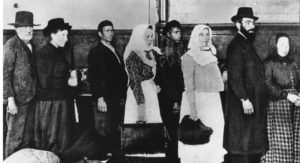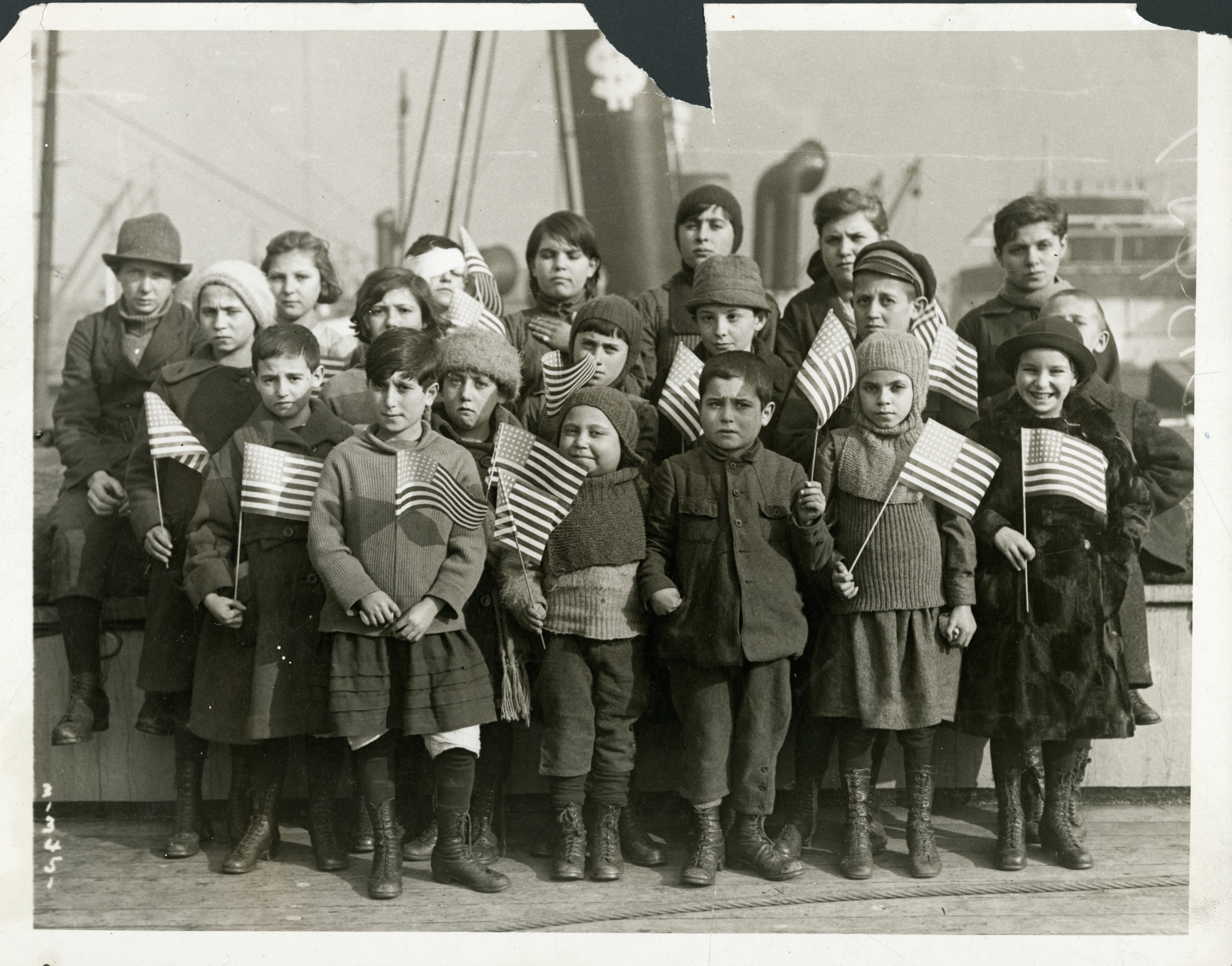The journey of Jewish immigrants to America is a captivating tale within the broader scope of American history, shaped by both “push and pull factors.” Push factors encourage a population to leave its home, such as persecution or economic hardship, while pull factors are those that draw a population to another area or place. Let’s explore the arrival of Jews in America, and the push and pull factors that contributed to the three major waves of Jewish immigration to America.
The Three Waves of Jewish Immigration to America
Many people might be surprised to learn that the Jewish American story begins back in 1654, before American independence. This first wave of immigration consisted of Sephardi Jews (Jews of Spanish/Portuguese descent). Let’s explore the push and pull factors that contributed to the origins of American Jewry:
Origins of American Jewry: Push Factors
Persecution and Expulsion:
The primary push factor was the persecution and expulsion faced by Sephardi Jews in their countries of origin, particularly as a result of the Portuguese Inquisition. This persecution created a hostile environment, compelling them to seek refuge elsewhere.
Religious Intolerance:
Sephardi Jews faced religious intolerance and discrimination in their home countries. The desire for religious freedom and the opportunity to practice their faith without fear of persecution motivated them to leave.
Origins of American Jewry: Pull Factors
Religious Freedom in the American Colonies:
The American colonies, with their relatively tolerant and inclusive culture, offered Jewish immigrants – most of whom were of Sephardi origin – the prospect of religious freedom. The idea of being able to practice Judaism openly and without fear of reprisals attracted them to the colonies.
Economic Opportunities:
The American colonies presented economic opportunities that were appealing to Jewish immigrants. The prospect of engaging in trade, commerce, and other economic activities in the growing colonies served as a pull factor for those seeking better economic prospects.
By the time of the American Revolution in the late 18th century, the U.S. Jewish population was still relatively small. It is estimated that around 2,500 Jews lived in the American colonies at the time of the Revolution. After the United States gained independence, the U.S. Jewish population began to grow more significantly.
The second wave of Jewish immigration to America was from 1840 to 1880. These immigrants were primarily Ashkenazi Jews (Jews of Eastern European descent), who came from Central Europe and the area that became Germany. Let’s explore the push and pull factors that contributed to the growth of Ashkenazi Jews in America:
Growth of American Jewry in the Mid-1800s: Push Factors
Economic Hardship:
Many Jewish immigrants were pushed by economic challenges in their home countries. Limited economic opportunities, poverty, and difficult living conditions motivated them to seek better prospects in the United States.
Antisemitism:
Antisemitic persecution and discrimination were significant push factors. Anti-Jewish violence, discriminatory laws, and social hostility in Central and Eastern Europe compelled many Jewish families to seek refuge in a country where religious freedom was promised.
Political Instability:
Political instability and upheavals in Europe, including the Revolutions of 1848, also spurred immigration.
Growth of American Jewry in the Mid-1800s: Pull Factors
Economic Opportunities in the U.S.:
The United States, during this period, was experiencing industrialization and economic growth. The promise of economic opportunities, the availability of jobs in emerging industries, and the potential for upward mobility attracted Jewish immigrants seeking better economic prospects.
Religious Freedom for Jews:
The U.S. offered a level of religious freedom and security that was appealing to Jewish immigrants. Unlike the persecution they faced in Europe, the United States allowed individuals to practice their faith without the same level of discrimination or hostility.
Land of Opportunity:
The concept of America as the “land of opportunity” played a significant role as a pull factor. The idea that individuals could achieve success through hard work and determination motivated many to make the journey.
Chain Migration:
As Jewish immigrants got settled in America, they sent for their relatives. The established communities made coming to the U.S. more attractive.
As a result of this wave of immigration, the U.S. Jewish population jumped to about 250,000. This period contributed to the growth and geographic diversification of America’s Jewish community. The Jews already living in the United States were members of traditional communities that followed Sephardi religious customs. Things began to change after the American Revolution as younger Jews wanted their congregations to reflect American styles and ideals. The Central European Ashkenazi Jews arrived, having already experienced religious change. Many were part of a religious reform movement that emphasized integration with modern society, while de-emphasizing traditional practices like strict observance of Shabbat (the sabbath) and keeping kosher (religious dietary laws). American Reform Judaism spread rapidly as these Jews established new communities in places as diverse as Cincinnati, Natchez, Mississippi, Houston, and San Francisco.
The third major wave of Jewish immigration to America – and the period of greatest growth for American Jewry – was from 1880 to 1924. This was a wave of 2 million immigrants from Eastern Europe, who were also Ashkenazi Jews. Let’s explore the push and pull factors that brought these Jews to America:
Third Wave of Jewish Immigration to America: Push Factors
Pogroms and Persecution:
A significant push factor during this period was the rise of antisemitic violence and persecution, particularly in Eastern Europe. Pogroms, which were organized, violent attacks against Jewish communities, compelled many Jews to escape the violence and seek safety.
Economic Hardship:
Poverty and limited economic opportunities in Eastern European countries, especially in the Pale of Settlement, motivated Jewish families to seek better economic prospects in the United States.
Restrictive Laws and Discrimination:
The enactment of discriminatory laws and policies restricted the rights and opportunities of Jews in employment and education. For example, Russian Imperial policies prevented most Jews from living in major cities like Moscow and St. Petersburg, where economic opportunities were better. There were strict quotas on Jewish students in schools.
Third Wave of Jewish Immigration to America: Pull Factors
Economic Opportunities in the U.S.:
The United States continued to offer economic opportunities, especially in rapidly industrializing cities. The growth of industries and the demand for labor attracted Jewish immigrants who sought better economic prospects and upward mobility.
Industrialization and Urbanization:
The ongoing process of industrialization and urbanization in the U.S. created a demand for labor in factories, mills, and other industries. Jewish immigrants saw the potential for employment and economic advancement in these urban centers.
Religious and Intellectual Freedom:
The United States, with its commitment to religious and cultural diversity, and its greater tolerance for different ideas appealed to Jewish immigrants seeking a place where they could freely practice their religion and enjoy greater intellectual freedom.
American Dream and Social Mobility:
The idea of the American Dream, with its promise of social and economic mobility through hard work and determination, motivated Jewish immigrants to seek a better life for themselves and their families.
Many of these Eastern European Jewish immigrants were from more traditional backgrounds and had a deep commitment to ritual observance. By 1924, America’s Jewish population was around 3.5 million people. The influx of Jewish immigrants during the third wave had a profound and lasting impact on the United States. The growth of American Jewry enriched the cultural fabric of the nation, contributing diverse traditions, customs, and perspectives. Economically, Jewish immigrants played pivotal roles in various sectors, contributing to the industrial development of urban centers and establishing successful businesses.
To further explore this history, the Institute for Curriculum Services provides a comprehensive lesson plan illuminating the diverse stories and impacts of Jewish Americans. This free educational resource exemplifies our mission of enhancing accurate instruction about Jewish culture, faith, and peoplehood



